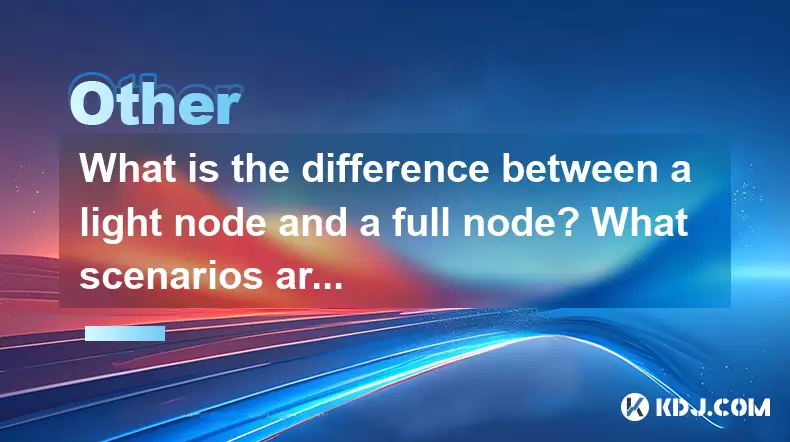-
 Bitcoin
Bitcoin $115200
-2.68% -
 Ethereum
Ethereum $3601
-5.16% -
 XRP
XRP $3.035
-2.96% -
 Tether USDt
Tether USDt $0.9997
-0.04% -
 BNB
BNB $764.5
-5.43% -
 Solana
Solana $168.1
-5.92% -
 USDC
USDC $0.9998
-0.02% -
 Dogecoin
Dogecoin $0.2090
-4.80% -
 TRON
TRON $0.3272
-0.49% -
 Cardano
Cardano $0.7306
-5.00% -
 Hyperliquid
Hyperliquid $39.16
-12.22% -
 Stellar
Stellar $0.3967
-4.96% -
 Sui
Sui $3.566
-5.95% -
 Chainlink
Chainlink $16.55
-6.57% -
 Bitcoin Cash
Bitcoin Cash $552.3
-3.90% -
 Hedera
Hedera $0.2516
-4.69% -
 Avalanche
Avalanche $21.99
-5.75% -
 Toncoin
Toncoin $3.621
-0.28% -
 Ethena USDe
Ethena USDe $1.000
-0.03% -
 UNUS SED LEO
UNUS SED LEO $8.951
0.02% -
 Litecoin
Litecoin $105.9
-3.59% -
 Shiba Inu
Shiba Inu $0.00001232
-5.00% -
 Polkadot
Polkadot $3.640
-5.55% -
 Uniswap
Uniswap $9.048
-7.03% -
 Monero
Monero $301.8
-1.51% -
 Dai
Dai $0.9999
-0.01% -
 Bitget Token
Bitget Token $4.334
-3.66% -
 Pepe
Pepe $0.00001064
-6.17% -
 Cronos
Cronos $0.1367
-5.78% -
 Aave
Aave $259.2
-4.59%
What is the difference between a light node and a full node? What scenarios are they suitable for?
Light nodes, ideal for mobile devices and frequent transactions, rely on full nodes for data, while full nodes store entire blockchains, enhancing network security and decentralization.
May 18, 2025 at 05:21 pm

In the world of cryptocurrencies, nodes play a crucial role in maintaining the integrity and functionality of blockchain networks. There are different types of nodes, with light nodes and full nodes being two of the most common. Understanding the differences between these nodes and their suitable scenarios is essential for anyone involved in the cryptocurrency ecosystem.
What is a Light Node?
A light node, also known as a lightweight node or SPV (Simplified Payment Verification) node, is a type of node that does not store the entire blockchain. Instead, it relies on full nodes to provide the necessary data to verify transactions and interact with the blockchain. Light nodes are designed to be more resource-efficient, making them suitable for devices with limited storage and processing power.
Light nodes work by downloading only the block headers, which contain essential information such as the block hash and the Merkle root. When a user wants to verify a transaction, the light node requests the necessary data from full nodes, including the Merkle path, to confirm the transaction's inclusion in the blockchain. This approach allows light nodes to operate with significantly less data compared to full nodes.
What is a Full Node?
A full node, on the other hand, is a node that stores and validates the entire blockchain. It maintains a complete copy of all blocks and transactions, ensuring the integrity of the network by independently verifying each new block and transaction. Full nodes play a critical role in the decentralized nature of blockchain networks, as they can independently validate the state of the blockchain without relying on other nodes.
Full nodes require more resources, including storage space, processing power, and bandwidth, compared to light nodes. They are responsible for relaying transactions and blocks to other nodes in the network, contributing to the overall security and decentralization of the blockchain.
Differences Between Light Nodes and Full Nodes
The primary differences between light nodes and full nodes lie in their data storage, resource requirements, and functionality:
- Data Storage: Light nodes store only block headers and rely on full nodes for additional data, while full nodes store the entire blockchain, including all blocks and transactions.
- Resource Requirements: Light nodes require less storage space, processing power, and bandwidth, making them suitable for devices with limited resources. Full nodes, on the other hand, demand more resources to maintain and validate the entire blockchain.
- Functionality: Light nodes can verify transactions and interact with the blockchain but cannot independently validate the entire blockchain. Full nodes, with their complete copy of the blockchain, can independently validate all transactions and blocks, contributing to the network's security and decentralization.
Scenarios Suitable for Light Nodes
Light nodes are particularly suitable for the following scenarios:
- Mobile Devices: Due to their limited storage and processing capabilities, mobile devices benefit from using light nodes to interact with blockchain networks without compromising performance.
- Resource-Constrained Environments: In environments where resources such as storage and bandwidth are limited, light nodes provide an efficient way to participate in the blockchain ecosystem.
- Frequent Transactions: Users who frequently engage in transactions but do not need to validate the entire blockchain can use light nodes to quickly verify and process their transactions.
Scenarios Suitable for Full Nodes
Full nodes are ideal for the following scenarios:
- Network Security and Decentralization: Running a full node contributes to the security and decentralization of the blockchain network by independently validating transactions and blocks.
- Data Analysis and Research: Researchers and analysts who require access to the entire blockchain dataset can benefit from running a full node to perform in-depth analysis and research.
- High-Trust Environments: In scenarios where trust and verification are paramount, such as in financial institutions or enterprises, full nodes provide the necessary level of security and validation.
How to Set Up a Light Node
Setting up a light node is relatively straightforward and can be done using various software and tools. Here's a step-by-step guide to setting up a light node for Bitcoin:
- Choose a Light Wallet: Select a light wallet that supports SPV, such as Electrum or Mycelium.
- Download and Install: Download the chosen light wallet from its official website and follow the installation instructions for your operating system.
- Connect to the Network: Launch the light wallet and connect to the Bitcoin network. The wallet will automatically start downloading the necessary block headers.
- Create or Restore a Wallet: Create a new wallet or restore an existing one using your seed phrase or private keys.
- Start Using the Light Node: Once the wallet is set up, you can start using it to send and receive Bitcoin transactions, which will be verified using the light node's SPV functionality.
How to Set Up a Full Node
Setting up a full node requires more resources and technical knowledge compared to a light node. Here's a step-by-step guide to setting up a Bitcoin full node using Bitcoin Core:
- Check System Requirements: Ensure your system meets the minimum requirements for running a Bitcoin full node, including sufficient storage space (at least 500 GB) and a reliable internet connection.
- Download Bitcoin Core: Visit the official Bitcoin website and download the latest version of Bitcoin Core for your operating system.
- Install Bitcoin Core: Follow the installation instructions to install Bitcoin Core on your system.
- Configure Bitcoin Core: Open the Bitcoin Core application and navigate to the settings to configure your node. You can choose to run the node as a pruned node to save storage space or as a full node to store the entire blockchain.
- Start Synchronizing: Launch Bitcoin Core and start the synchronization process. This may take several days, depending on your internet connection and the size of the blockchain.
- Verify the Blockchain: Once the synchronization is complete, Bitcoin Core will automatically start verifying the entire blockchain, ensuring its integrity and validity.
- Start Using the Full Node: After the verification process is complete, you can start using your full node to interact with the Bitcoin network, validate transactions, and contribute to the network's security and decentralization.
Frequently Asked Questions
Q: Can a light node be used to mine cryptocurrencies?
A: No, light nodes cannot be used for mining cryptocurrencies. Mining requires the full validation of transactions and blocks, which light nodes are not capable of doing. Only full nodes can participate in the mining process.
Q: Are there any privacy concerns associated with using light nodes?
A: Yes, there are potential privacy concerns when using light nodes. Since light nodes rely on full nodes for data, they may leak information about the transactions they are verifying. Users concerned about privacy may prefer to use full nodes or implement additional privacy measures.
Q: Can a full node be run on a cloud server?
A: Yes, it is possible to run a full node on a cloud server, provided the server meets the necessary resource requirements. However, users should be aware of the potential security risks associated with running a full node on a third-party server and take appropriate measures to secure their node.
Q: How can I switch from a light node to a full node?
A: To switch from a light node to a full node, you will need to set up a full node using the appropriate software, such as Bitcoin Core. Once the full node is set up and synchronized, you can transfer your funds from the light wallet to the full node wallet. Keep in mind that this process may take time and require additional resources.
Disclaimer:info@kdj.com
The information provided is not trading advice. kdj.com does not assume any responsibility for any investments made based on the information provided in this article. Cryptocurrencies are highly volatile and it is highly recommended that you invest with caution after thorough research!
If you believe that the content used on this website infringes your copyright, please contact us immediately (info@kdj.com) and we will delete it promptly.
- Cardano Price, Pi Network, and Crypto Presales: What's the Buzz?
- 2025-08-02 08:50:12
- XRP Fund Success: Teucrium CEO Reveals Trillions on the Horizon
- 2025-08-02 09:10:12
- Challenge Coins: More Than Just Collectibles – A Military Tradition
- 2025-08-02 08:30:12
- Under the Radar: Hunting for 100x Crypto Gems in a Pi Network World
- 2025-08-02 08:30:12
- Bitcoin, Solana, and Altcoin Season: What's Hot and What's Not?
- 2025-08-02 07:10:12
- Toncoin, Rollblock, and the Token Offering Landscape: A New York Minute
- 2025-08-02 07:10:12
Related knowledge

What is the difference between a blockchain and a database?
Aug 01,2025 at 09:36pm
Understanding the Core Structure of a BlockchainA blockchain is a decentralized digital ledger that records data in a series of immutable blocks linke...

What is a hash in a blockchain?
Aug 02,2025 at 05:28am
Understanding the Concept of Hash in BlockchainA hash in the context of blockchain technology refers to a unique digital fingerprint generated by a cr...

What is a hash in a blockchain?
Aug 02,2025 at 04:43am
Understanding the Concept of Hash in BlockchainA hash in the context of blockchain technology refers to a unique digital fingerprint generated by a cr...

Who created blockchain?
Aug 02,2025 at 05:15am
What Is Blockchain and Why Does Its Origin Matter?Understanding who created blockchain begins with recognizing what blockchain actually is. Blockchain...

How to start a business using blockchain?
Jul 28,2025 at 12:36am
Understanding the Basics of Blockchain TechnologyBefore diving into the process of starting a business using blockchain, it's crucial to understand wh...

What is a token on the blockchain?
Jul 21,2025 at 07:00am
Understanding the Concept of a TokenIn the realm of blockchain technology, a token is a digital representation of an asset or utility that exists on a...

What is the difference between a blockchain and a database?
Aug 01,2025 at 09:36pm
Understanding the Core Structure of a BlockchainA blockchain is a decentralized digital ledger that records data in a series of immutable blocks linke...

What is a hash in a blockchain?
Aug 02,2025 at 05:28am
Understanding the Concept of Hash in BlockchainA hash in the context of blockchain technology refers to a unique digital fingerprint generated by a cr...

What is a hash in a blockchain?
Aug 02,2025 at 04:43am
Understanding the Concept of Hash in BlockchainA hash in the context of blockchain technology refers to a unique digital fingerprint generated by a cr...

Who created blockchain?
Aug 02,2025 at 05:15am
What Is Blockchain and Why Does Its Origin Matter?Understanding who created blockchain begins with recognizing what blockchain actually is. Blockchain...

How to start a business using blockchain?
Jul 28,2025 at 12:36am
Understanding the Basics of Blockchain TechnologyBefore diving into the process of starting a business using blockchain, it's crucial to understand wh...

What is a token on the blockchain?
Jul 21,2025 at 07:00am
Understanding the Concept of a TokenIn the realm of blockchain technology, a token is a digital representation of an asset or utility that exists on a...
See all articles

























































































